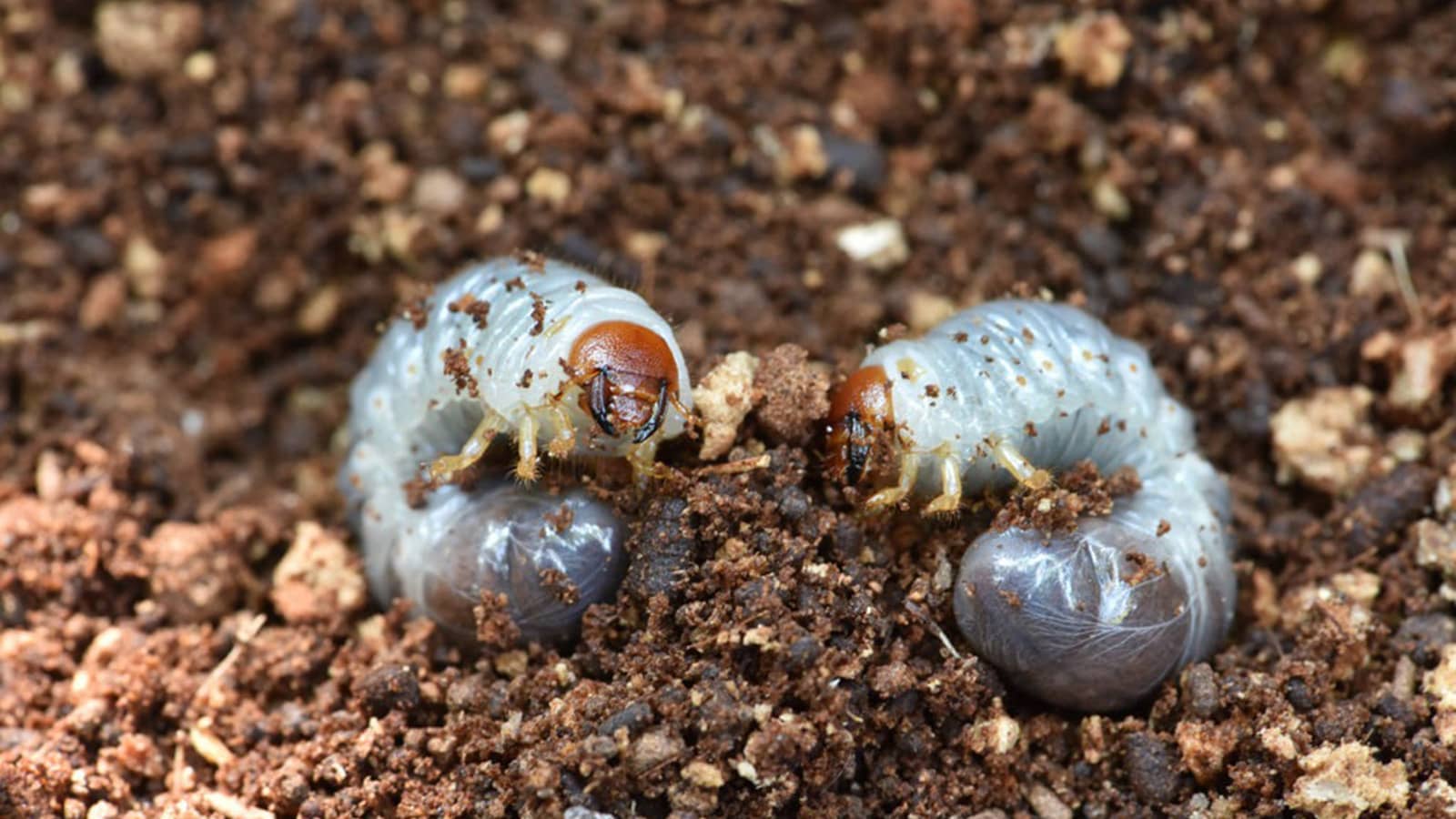You have to differentiate between the good and the bad bugs in your garden or lawn to keep the right one. Earthworms are good, grub worms are bad, and this is why you have to eliminate grub worms from your soil. And guess what, there is never one grub worm because their population keeps expanding. This was the problem that I had a few years ago, and I am here to share my experience and solutions. Hopefully, you will be able to detect these garden pests early so that you can get rid of them fast.
Contents
1. What Does A Grub Worm Look Like?
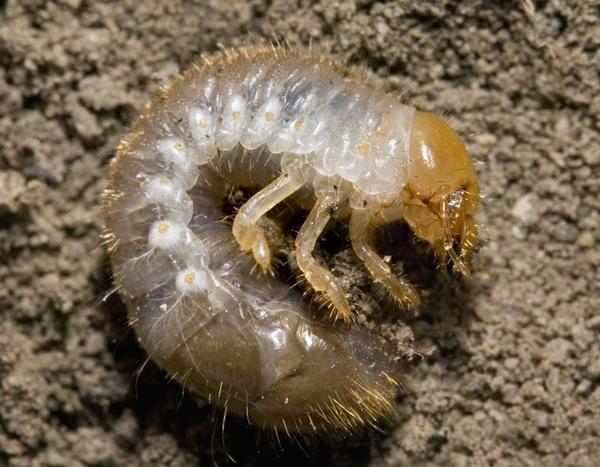
A grub worm or masked chafer is a plumb creature that is the larval life-stage before turning into a beetle. This also means that grub worms are not worms at all. A grub worm has a C-shaped body with a slick and shiny appearance. As for its length, it ranges from a quarter-inch to two inches depending on the species. It has a creamy-white color with a rusty orange head, and it has 6 legs at the front of its body. You will find them in the damaging lawns or soil as they feed on the roots and thatch of turfgrass. Despite being small, a grub worm can thrive and multiply all year long in your garden or lawn. This is when you notice the damages to the leaves of your grass and other plants.
2. Grub Worm Infestation Signs
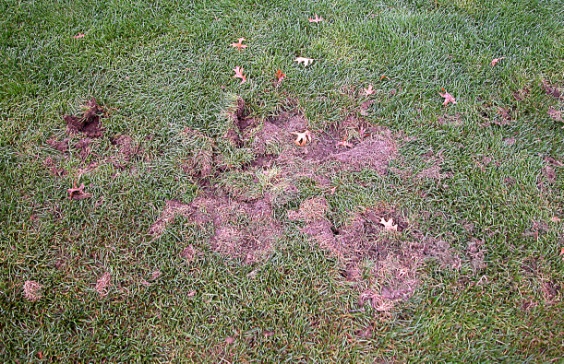
Grub worms can be in both cool-season grasses and warm-season grasses in the garden or lawn. The most common grass types including Bermuda grass, bluegrasses, buffalo grass, fescues, ryes, St. Augustine, and zoysia. One of the most common signs of grub worm infestation is the appearance of weeds. Bear in mind that grub worms feed on the root system of the plants which makes them weaker. When this happens, the plants will not be strong enough to compete with weeds. Then you will start to see areas of damaged or dying grass resulting from grub worms feeding. Another sign of an infestation is when you start to see burrowing or digging pests like moles on your property.
The only way to make sure that there is a grub worm infestation is by checking the soil. If you spot a grub worm by accident, chances are more of them are hiding underneath the soil. In case you spot damages that I mentioned above, you should check the soil to make sure. You can examine different parts of the areas by digging about 3 to 4 inches deep into the soil. If you find more than 5 grub worms per square foot, then you will have to take action immediately. Without proper treatment, they will multiply and attack more parts of your garden or lawn in no time.
3. Why Are Grub Worms Bad?
Grub worms are major problems for lawn ownerss, turf lawns to be exact. However, all grub worms will eat grassroots because those are the main sources of nutrients that they need. An infestation of grub warms can completely devastate any lawn or turf on the property. Grub worms are bad because they have no physical benefit to the lawn or yard at all. They may be good to have as fish bait or reptile food, but this is it. This is why you have to get rid of grub worms the moment you see them.
4. How To Detect Grub Worms
Sometimes the damages don’t really show up right away, but there are a few things that you can spot. You will notice some early signs that indicate grub worms in your lawns if there are things like below.
- The lawn feels spongy when you walk on it, and the grass is easy to pull and roll-up. You can test this sign by doing a tug test to see if you can pull it up easily.
- When there are brown dead patches of grass on the lawn as the grass starts to thin out. Then it will turn yellow and die, and this is could be from the damages of the grubs. They feed on roots that can kill turfgrass very easily and fast.
- Animals like birds, moles, and skunks like to feed on grubs, and they will appear if there are grubs on your lawn. The moment you see these animals digging or pecking on the soil, you know there is food for them.
5. 4 Common Grub Worm Types
At the adult stage, a grub worm turns into a beetle that emerges from the soil in your garden or lawn. The thing is that there are many types of grub worm that invade the soil of the yard. This is exactly what we are going to discuss, and let’s get into it right away.
5.1. Japanese Beetle Grub
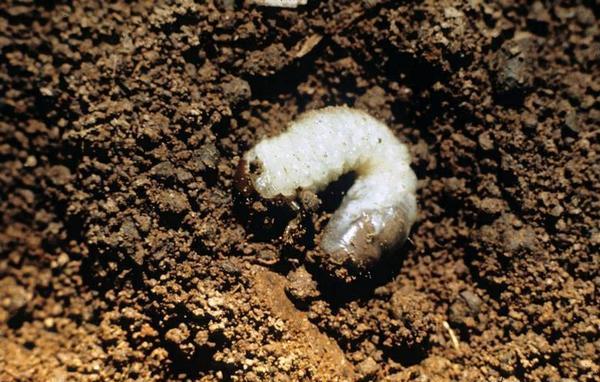
The Japanese beetle is a lawn grub that is an infamous pest in the Northeast as well as even some areas in Canada. A Japanese beetle has a metallic green coloration with copper wing covers. The grub of this beetle grows up to a length of 1 inch, and it lives in the deep soil surface in winter. This type is dangerous as both a grub and beetle because adult Japanese beetles also cause a lot of damages. Even if their lifespan is only around 30 to 45 days, they can still cause quite a plenty of damages. If you spot one, handpick it or squash it before it feeds on your plants and vegetables.
5.2. May Beetle / June Beetle Grub
Among several hundreds of species, around twenty of them are pests in the gardens and lawns. This beetle has a black or brown body with a length of between 0.5 and 1 inch. You will find them in the evening during summer or around lights since they are nocturnal. Only for a couple of weeks per year that these beetles are active, and they don’t provide much harm.
5.3. Northern & Southern Masked Chafers
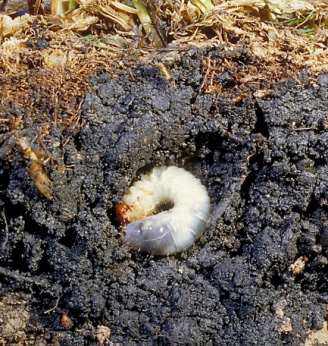
The northern ones are common in North America while the southern species are found in the southern states. The adults of these two species are ½ inch long, and they have a shiny brown color with a dark mask. Both northern and southern masked chafers emerge in late June, and they actively breed for about a month. These bugs are interesting because the adults of this species do not feed so they don’t cause damages at all. However, the grubs of these beetles consume grassroots that can result in severe damages to turfgrass. These grubs often feed in late summer and fall as they reach the second and third instars.
5.4. Oriental Beetle
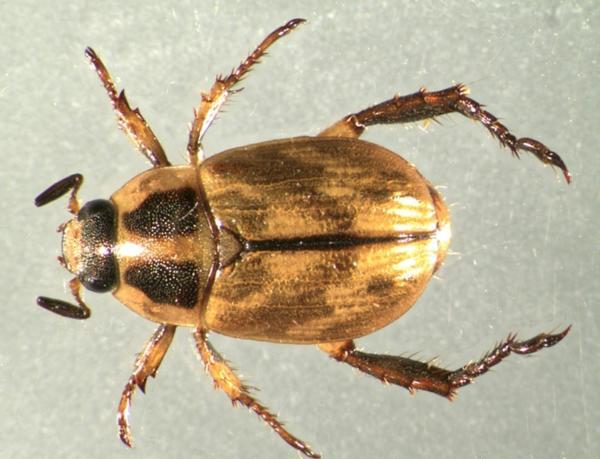
The adults of this beetle species emerge from the soil at the end of June until July and stay active for 2 months. Their size is similar to the first type of beetle, but they have a straw color with dark blotches on wing covers. Oriental beetles are active at night, and they feed on flowers and leaves that they can find. The thing to know is that the adults don’t cause a lot of damage, but the grub worms do. Their grubs can injure the roots of turfgrass, leaving a brown and patchy lawn in summer and fall.
6. 10 Effective Ways To Get Rid Of Grub Worms
Despite the big scale of damages they can cause, grab worms are quite easy to get rid of. When you detect them early, there are several methods that you can do to eliminate them from your garden. And when things tend to get out of hand, you can always call a pest control company. But before you make a phone call, let’s try some of the effective ways to remove grub worms below first.
6.1. Beer
You probably don’t believe this, but hear me out. I did not believe that either at first, but this method actually works although it can be quite pricey. There are 2 ways to get rid of grub worms using beer, and both ways are easy and simple. The first approach is by digging a hole in the lawn and put a plastic bowl containing beer into it. You can also use Tupperware, and leave it there overnight as a trap. When the morning comes, you will see grubs and probably some other bugs in the container.
Another way is by soaking the lawn soil with full-strength beer and skip watering on that day for more effectiveness. The grass will absorb the beer into the roots, and the grubs will feed on those roots. They will have the “full” feeling for a long time which causes them to quit eating then they will die. It sounds so simple but there are some drawbacks that you should also consider. The lawn may stink a little when it rots in the sun, and you may not like it. You are going to need a lot of beer, and it is more expensive than many alternatives on the list here. But if you don’t want, feel free to conduct the experiment.
6.2. Beneficial Nematodes
One of the ways to deal with invaders to your garden and lawn is to release some predators. Beneficial nematodes are the microscopic predators that feed on all 4 types of grubs above. If you suspect the attack or want to prevent them, apply beneficial nematodes at the end of spring. Do so when the temperature of the soil is over 60 degrees Fahrenheit which is the most effective time. The beneficial nematodes then will go into the soil to look for and kill grubs in the growing season. Many gardeners are so fond of them because beneficial nematodes only attack grub worms. Beneficial nematodes are not dangerous to humans, pets, soil, or other insects at all which is absolutely great.
They look like a powder, but they are living organisms that you can purchase. You can apply them by mixing them with some water then spray them over the lawn using a hose-end type sprayer. Beneficial nematodes work best in moist soil, so water the lawn both before applying them and after applying them. Along with that, do so in the evening so that the nematodes can settle into the soil before sunrise. Keep applying them every spring to ensure that there are no more grubs to damage your plants. If you see grubs with reddish-brown color a few weeks later, you know your nematodes are working well.
6.3. Diatomaceous Earth
When it comes to the best and easiest ways to deal with insects and pests, diatomaceous earth always appears. This fine powder is something that you should have in the cabinet to tackle bug problems. It can kill a wide range of insects, especially grub worms in the garden and lawn. All you need to do is sprinkle some powder on the soil in your yard where you see the grubs. Once they contact the tiny particles of the powder that you spread, it will pierce through their wax-like coating right away. Diatomaceous earth kills the grubs to die of dehydration within a few days to one week. The only drawback is that it can also kill some beneficial insects in the garden. But if you don’t mind, then feel free to use it.
6.4. Dish Soap
Easy and simple, you can easily mix one tablespoon of liquid dish soap with one quart of water. Put the mixture in a spray bottle, then spray it directly onto the grubs the moment you see them. It is an effective homemade grub worm killer that eliminates and prevents them from invading your garden.
6.5. Garlic
As for this one, it is another effective approach to get rid of adult Japanese beetles and grubs. Since they hate the smell of garlic, placing crushed garlic cloves around the garden will do the job very well. You can also make it even more effective by creating a homemade garlic spray. On top of placing crushed garlic cloves, spray the crushed garlic and water mixture onto the soil. It is going to smell very strong, and this is also why Japanese beetles and grubs will not stay.
6.6. Grub Control Pesticide
There are grub control insecticides or pesticides that you can find and use to remove grub worms from the soil. Choose the ones that contain bifenthrin, carbaryl, or imidacloprid because they are effective at killing grubs. More than that, they can kill grub worms the moment they come in contact with those pests. This type of grub control is available in the forms of granular and liquid, and the choice is all yours.
6.7. Install Birdhouses
Birds feed on grubs, and this is one of the most natural ways to deal with grub problems. Simply set up one or two birdhouses near the garden or lawn to attract birds to visit your property. Birds like house wrens feed on not only grubs but also bugs and worms that attack the plants and vegetables. It is an easy method that works very well without the need of applying insecticides or pesticides at all. Even better, you will also get to have some pretty birds in the perimeter of your houses as well. So if you don’t mind having birds around, this is a great approach to apply.
6.8. Milky Spore Disease
This is another common method that many people use to get rid of grub worms from your garden or lawn. Milky spore is a bacterium that you can apply to the soil in either a granular or powder form. When a grub consumes the spores, it will go to reproduce within its body system. The bacterium will kill the grub then release more spores that will do the same thing with nearby grubs. This method is only effective with Japanese beetle grubs, and it works every time. The best time to apply is in late August when the grubs are actively growing in the upper layer of the soil. So if your garden or lawn is under attack from this grub, you know what to do.
6.9. Neem Oil
When it comes to how to get rid of grub worms, neem oil should always be a choice to consider. It is a botanical pesticide that contains insecticidal properties that work effectively in eliminating Japanese beetles and lawn grubs. All you need to do is mixing neem oil with water then spray it onto the affected areas. This is to deter beetles from laying eggs and prevent the grubs from feeding. The oil will do its job right away, and you will see the results within days or a few weeks.
6.10. Use Organic Fertilizer
The important thing about this part is that it does not really eliminate the grub worms from the soil. Instead, it helps to strengthen the soil so that the plants can endure stress a little better. This is an important step to apply when you are in the process of treating the grub worm problems. Since you cannot remove them right away, your plants have to hang in there until the pests are completely gone. This also means you should stop using synthetic chemical lawn fertilizers on the lawn. Grubs tend to cause the biggest problems in lawns that receive excessive amounts of chemical fertilizer. This is also to prevent them from coming back after you got rid of them.
Note: The best time to prevent or treat grub worm problems is either in early fall or late summer. This is because they are still small, and they tend to stay near the soil surface at that time. Grub worms are less vulnerable to most treatment methods in spring because they are larger.
Conclusion
Grub worms are a pain to have in the yard, and you have to get rid of them the moment you spot one. They are pests that do more harm than good to the grass and soil, and too many of them are just bad. With several methods to eliminate these pests that I recommend above, things will be more convenient for you. Don’t forget to regularly check the yard after you remove them in case they come back. Feel free to share these tips with your friends and fellow gardeners, those will be beneficial for them.

